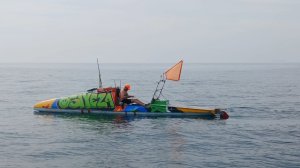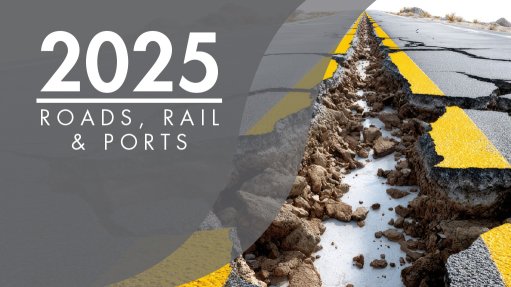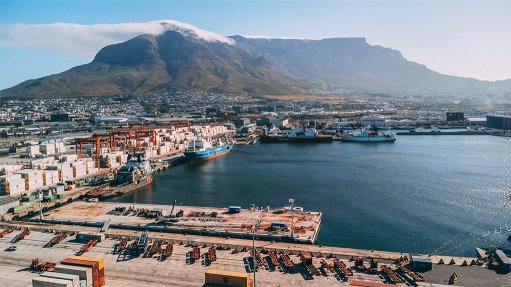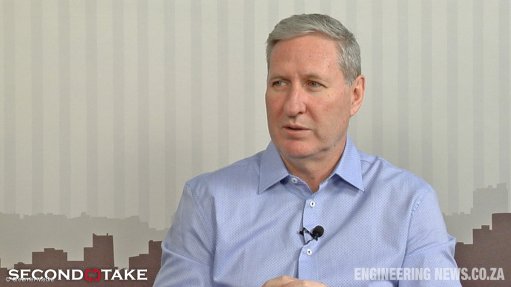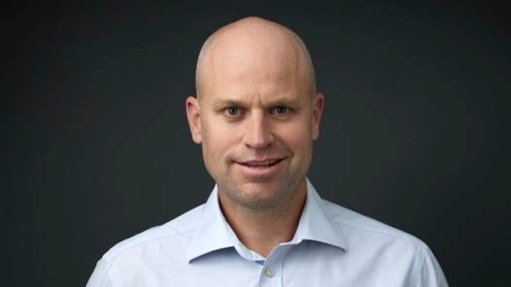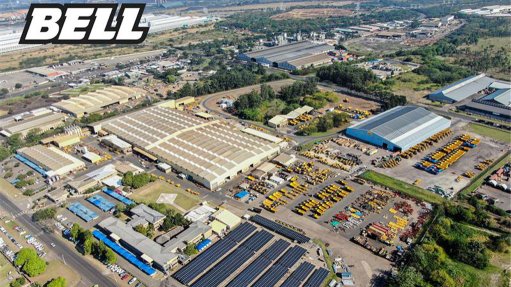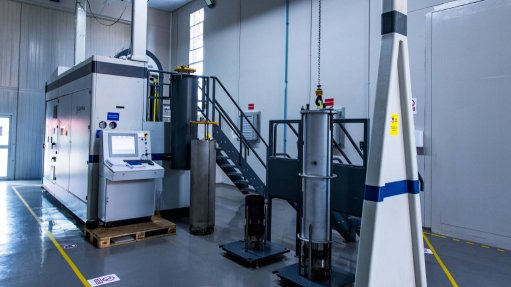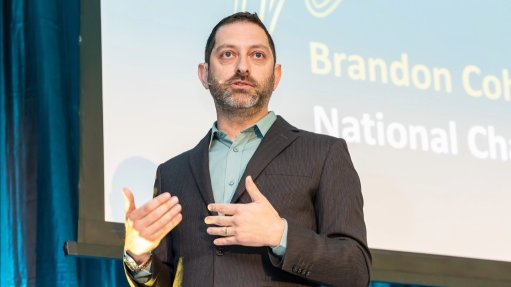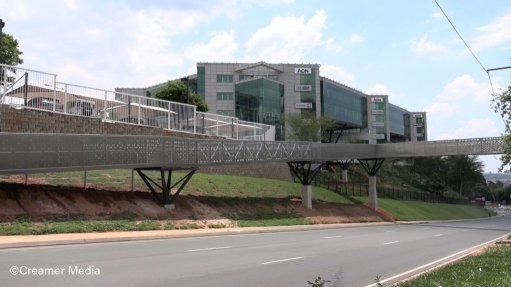Innovative engineering sees Gerhard Moolman row solo across the Atlantic in record time

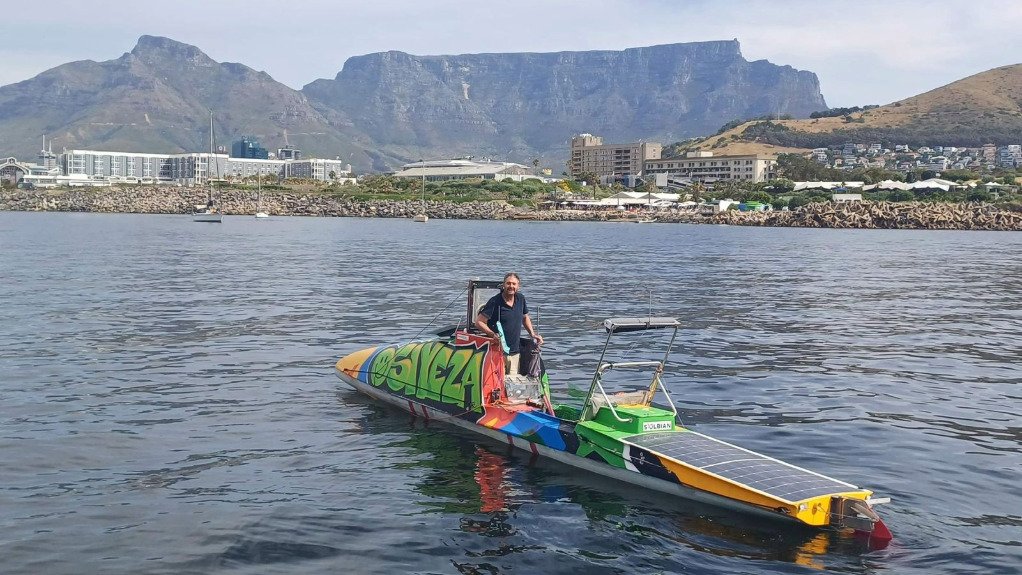
Gerhard Moolman arrives in Cayenne, French Guiana, after 37 days rowing solo 4 050 km across the Atlantic.
Gerhard Moolman aboard the Osiyeza in Cape Town harbour
Engineer Gerhard ‘Moolies’ Moolman arrived back safely in South Africa on January 10 after successfully completing a 4 050 km trip across the Atlantic Ocean on a uniquely engineered rowing boat named Osiyeza.
Moolman told Engineering News on January 13 that the paddle boat was not designed for rowing, so some innovative engineering had to be implemented to make the concept work. The team incorporated an ergometer rowing machine into the boat, which is typically a land-based device that simulates the rowing action, commonly used in gyms for cardio exercise and rowing training.
Although the human-powered Osiyeza is small, it has evolved to be more advanced than most yachts, said Moolman.
In preparation for the trip, Moolman and his team transformed the Osiyeza from a paddle boat into a rowing vessel, employing a foldable propeller driven by an intricate and sophisticated drivetrain.
The team included head engineer William Fraser, construction lead Ralph Teulings, Osiyeza owner and guide Richard Kohler and Cormorant Yachts founder and owner Ralph Dill.
“Initially, we constructed a setup where I faced backward, mimicking an ergometer machine. We integrated parts from an ergometer into the boat, creating a sliding mechanism where I moved up and down a slide bar.
“However, on the rough seas, the bearings began to wear out, as the conditions were harsher than anticipated,” he pointed out.
To solve this, Moolman rebuilt the system alone while at sea, modifying it so he could row using only his legs.
“I had trained my legs intensively for a year, increasing my strength from lifting 120 kg to 400 kg, with the ability to perform 20 repetitions at the higher weight – making my legs ten times stronger than my arms,” he said.
The new setup was essentially a sliding mechanism with a footplate. He pushed with his legs while pulling a rope attached to a chain. This chain passed through an arc and pulley system, eventually linking to a sprocket assembly with a freewheel bearing to prevent backspin. Below the sprocket assembly was a larger sprocket connected to a chain that drove the main drive shaft.
The drive shaft was equipped with a flywheel and extended through the hull of the boat, where it connected to a 2.5 horsepower outboard gearbox. Attached to this gearbox was two foldable aeronautical propeller blades that opened and closed during operation.
The aim of the trip was to raise R200 000 for the Door of Hope Children's Mission. Moolman said about 80% of the targeted funds have been raised so far and he hopes to raise the rest in the coming weeks.
The endeavour followed his previous Guinness World Record-setting adventure in 2002, during which he paddled 6 152 km from Cape Town Harbour, South Africa, to Lamu, Kenya.
For his most recent journey, Moolman departed from Cape Verde, a West African island in the central Atlantic Ocean, and travelled to Cayenne, in French Guiana, on the north-east coast of South America.
Moolman embarked on his solo crossing of the Atlantic Ocean on December 1, 2024, and arrived at his destination on January 7.
The plan was to cover about 4 000 km of open water using a unique rowing mechanism to power the one-of-a-kind ocean-going row boat. The journey was expected to take about 40 days, but Moolman achieved the feat in 37 days.
He explained that, although he did not apply for a Guinness World Record this time, the previous record set for a solo human-powered rowing trip on the Cape Verde to French Guiana route was 55 days. A four-man crew was able to do it in 44 days.
“Pushing a 500 kg vessel to exceed 10 km/h demands more than immense physical effort. It requires precise engineering, unwavering dedication, and, at times, a bit of nature’s grace,” Moolman explained.
Although the Osiyeza was able to reach speeds of 10 km/h during trials, Moolman said the average speed on the actual voyage was about 7 km/h.
“The problem was that I did my trials unloaded. But when we loaded the boat for the voyage, I noticed it was slower. Depending on the wind, however, I sometimes did go up to 8 km/h or even 9 km/h, but averaged at about 7 km/h,” he told Engineering News.
Along the way, Moolman said, the drive shaft broke, leaving him stuck without any spares. However, a bit of ingenuity solved the problem.
“The drive shaft was the only thing I didn't have a spare of. However, I did manage to fix it. I used a socket and I ground the one side square and the other side hex. That lasted for a limited time before it failed again. I was going for about ten days with it,” he recounted.
While at sea, Moolman had absolutely no support nearby and was entirely on his own, forced to rely on his own ingenuity and engineering prowess to solve problems along the way.
“Should I have major issues or distress, I would be dependent on the global maritime safety protocols, which includes contacting nearby ships via radio. So I really didn't have an option but to finish,” he said.
Donations to the Door of Hope Children's Mission can be made through Moolman’s website.
Article Enquiry
Email Article
Save Article
Feedback
To advertise email advertising@creamermedia.co.za or click here
Comments
Press Office
Announcements
What's On
Subscribe to improve your user experience...
Option 1 (equivalent of R125 a month):
Receive a weekly copy of Creamer Media's Engineering News & Mining Weekly magazine
(print copy for those in South Africa and e-magazine for those outside of South Africa)
Receive daily email newsletters
Access to full search results
Access archive of magazine back copies
Access to Projects in Progress
Access to ONE Research Report of your choice in PDF format
Option 2 (equivalent of R375 a month):
All benefits from Option 1
PLUS
Access to Creamer Media's Research Channel Africa for ALL Research Reports, in PDF format, on various industrial and mining sectors
including Electricity; Water; Energy Transition; Hydrogen; Roads, Rail and Ports; Coal; Gold; Platinum; Battery Metals; etc.
Already a subscriber?
Forgotten your password?
Receive weekly copy of Creamer Media's Engineering News & Mining Weekly magazine (print copy for those in South Africa and e-magazine for those outside of South Africa)
➕
Recieve daily email newsletters
➕
Access to full search results
➕
Access archive of magazine back copies
➕
Access to Projects in Progress
➕
Access to ONE Research Report of your choice in PDF format
RESEARCH CHANNEL AFRICA
R4500 (equivalent of R375 a month)
SUBSCRIBEAll benefits from Option 1
➕
Access to Creamer Media's Research Channel Africa for ALL Research Reports on various industrial and mining sectors, in PDF format, including on:
Electricity
➕
Water
➕
Energy Transition
➕
Hydrogen
➕
Roads, Rail and Ports
➕
Coal
➕
Gold
➕
Platinum
➕
Battery Metals
➕
etc.
Receive all benefits from Option 1 or Option 2 delivered to numerous people at your company
➕
Multiple User names and Passwords for simultaneous log-ins
➕
Intranet integration access to all in your organisation


